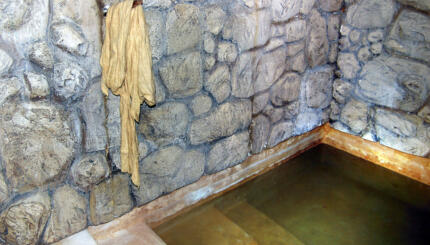Commentary on Parashat Metzora, Leviticus 14:1 - 15:33
This is the Torah portion that becomes infamous at some point in one’s Jewish education, recounting the unseemly details of a strange skin disease, tzaraat. Additionally, we become acquainted with the unfortunate consequences of the disease, as the afflicted one is alienated from the community until he or she is healed, welcomed back only after a purification ritual involving the kohen (priest), and an anointing of sanctified water mixed with the ashes of a red heifer.
Students of the Torah have been bothered for millennia — not only, to be sure, by the sheer aesthetic unpleasantness of this parshah, but also by the seemingly arbitrary nature of the affliction and the alienation it imposes. The ancient Rabbis are troubled by the absence of any rationale for the affliction of tzaraat. The Torah does not state what people do to contract it, nor is atonement effective as a cure.
Alienation and Affliction
But perhaps this is precisely the point — to raise the awareness of alienation and affliction in our midst. Seen in a broader context, the book of Leviticus calls our attention to the communal standards of holiness, and tzaraat reminds us that there is an underside to every society, even one predicated on such a lofty foundation. Where there is prosperity, bounty and harmony, there is also bound to be pain, alienation and discord.
In fact, the Torah as well as later Jewish tradition seizes upon the motif of tzaraat as symbolic of a breach among people as well as between people and God. For example, the Torah makes clear that Miriam is afflicted with tzaraat after she apparently speaks ill of Moses’ wife. Following suit, rabbinic midrash portrays this skin affliction as a sign of enmity produced by lashon hara, the unrestrained tongue.
With your help, My Jewish Learning can provide endless opportunities for learning, connection and discovery.
For an example of tzaraat as spiritual alienation, one can turn to the popular poem Yedid Nefesh, recited at the beginning of the service to greet Shabbat on Friday night. Here, the individual soul is “lovesick” for God, with the soul being so distant as to be like Miriam, suffering from tzaraat, to be cured only by Moses’ plea to God: “El na r’fa na lah (please God, heal her)!”
This parsha calls attention to how alienation is experienced individually, and addressed by society. Tzaraat is indeed an unbearable affliction, but one that is sustained only for a short time until healing is found. Furthermore, the overwhelming feeling toward the afflicted one is empathy and compassion.
No one with tzaraat is viewed as a permanent outcast. Their return to the community is envisioned after healing and a re-introduction ritual presided over by the priest. Finally, it is viewed as a truly regrettable and desperate situation to be avoided if at all possible. To prevent needless isolation, a thorough skin examination is required by an expert, and the rabbis illustrate the variety of instances in which the appearance of tzaraat is called into doubt.
It is troubling, then, to consider the extent to which we render those in our society who are most vulnerable as surrogate “metzora’im,” outcasts in the manner described by the Torah portion. Regrettably, yet predictably, the poor, the uneducated, the mentally ill, all those who are deemed to be social pariahs, generally by no fault of their own, come to occupy a position of perpetual exclusion from the blessings of our society.
As these metzora’im are outcasts, so are all those who live in perpetual exclusion from adequate education, health care, a sense of safety and daily well being. As the metzora’im are “untouchable,” so are those exiled by poverty ignored and disdained.
Treatment of the Poor
Furthermore, in light of this week’s Torah portion, our society’s treatment of the poor is particularly egregious. Leviticus at least views tzaraat as temporary, assuming that the afflicted individual will rejoin the community. The scourge of our society is that we expect only exceptional individuals in extraordinary circumstances to benefit from such social transformation. Contrary to every humane impulse of Jewish tradition, we have rendered poverty a pathology for which there is no cure, an exile for which there is no return.
Such treatment, by the standards of the Torah, is not only unjust, but blasphemous. Consider the famous line from Isaiah 58:6-7 that what God desires is for all to share their bread with the hungry, to welcome the homeless into their own home.
The great teaching of Isaiah is to view the poor not as alien, but as integral to our community, also created in the Divine image. It is a realization that begs immediate response, acting in such a way as to transform hearts of stone into compassionate hearts of flesh, fashioning a society in which no exclusion is permanent.
Provided by SocialAction.com, an online Jewish magazine dedicated to pursuing justice, building community, and repairing the world.
parsha
Pronounced: PAR-sha or par-SHAH, Origin: Hebrew, portion, usually referring to the weekly Torah portion.
Torah
Pronunced: TORE-uh, Origin: Hebrew, the Five Books of Moses.


